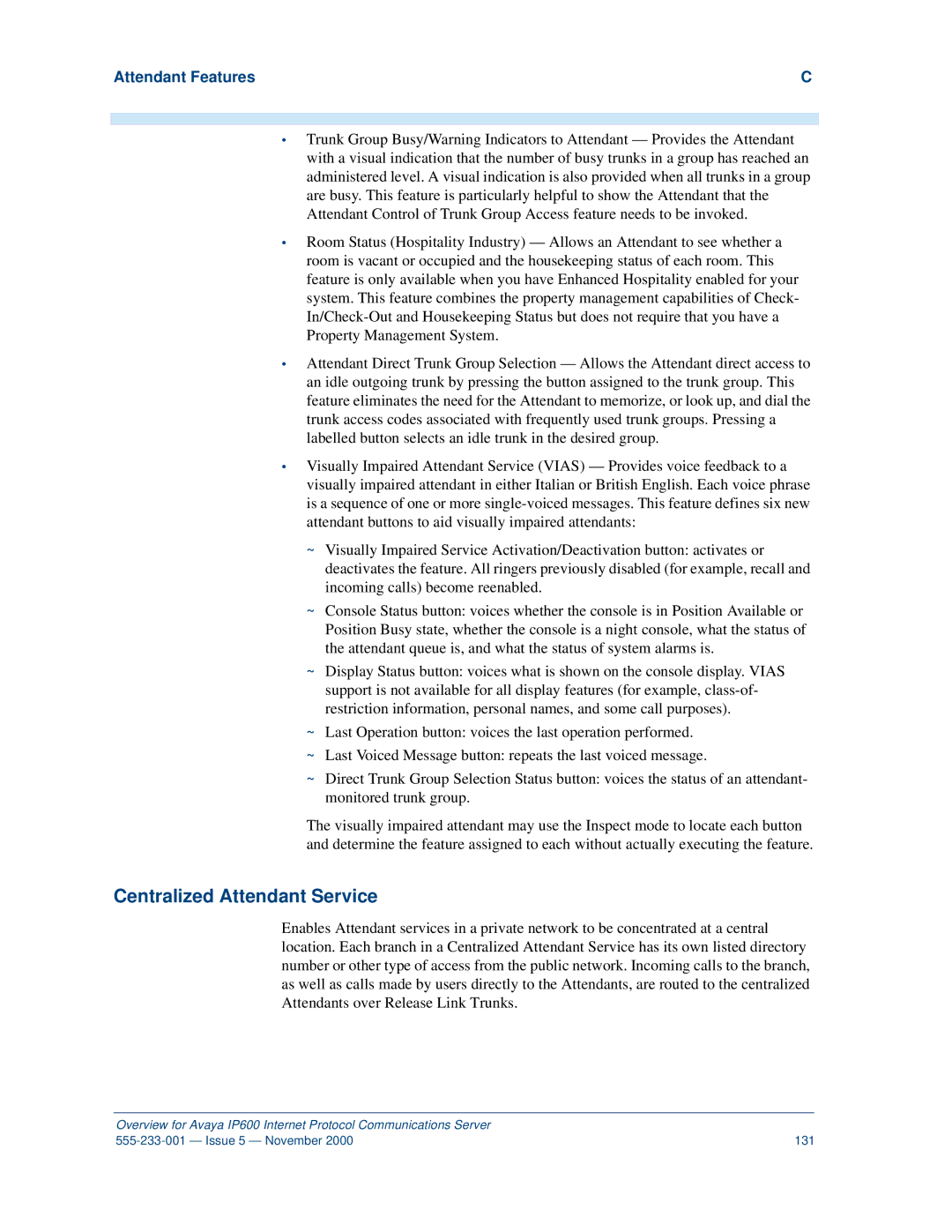
Attendant Features | C |
•Trunk Group Busy/Warning Indicators to Attendant — Provides the Attendant with a visual indication that the number of busy trunks in a group has reached an administered level. A visual indication is also provided when all trunks in a group are busy. This feature is particularly helpful to show the Attendant that the Attendant Control of Trunk Group Access feature needs to be invoked.
•Room Status (Hospitality Industry) — Allows an Attendant to see whether a room is vacant or occupied and the housekeeping status of each room. This feature is only available when you have Enhanced Hospitality enabled for your system. This feature combines the property management capabilities of Check-
•Attendant Direct Trunk Group Selection — Allows the Attendant direct access to an idle outgoing trunk by pressing the button assigned to the trunk group. This feature eliminates the need for the Attendant to memorize, or look up, and dial the trunk access codes associated with frequently used trunk groups. Pressing a labelled button selects an idle trunk in the desired group.
•Visually Impaired Attendant Service (VIAS) — Provides voice feedback to a visually impaired attendant in either Italian or British English. Each voice phrase is a sequence of one or more
~Visually Impaired Service Activation/Deactivation button: activates or deactivates the feature. All ringers previously disabled (for example, recall and incoming calls) become reenabled.
~Console Status button: voices whether the console is in Position Available or Position Busy state, whether the console is a night console, what the status of the attendant queue is, and what the status of system alarms is.
~Display Status button: voices what is shown on the console display. VIAS support is not available for all display features (for example,
~Last Operation button: voices the last operation performed.
~Last Voiced Message button: repeats the last voiced message.
~Direct Trunk Group Selection Status button: voices the status of an attendant- monitored trunk group.
The visually impaired attendant may use the Inspect mode to locate each button and determine the feature assigned to each without actually executing the feature.
Centralized Attendant Service
Enables Attendant services in a private network to be concentrated at a central location. Each branch in a Centralized Attendant Service has its own listed directory number or other type of access from the public network. Incoming calls to the branch, as well as calls made by users directly to the Attendants, are routed to the centralized Attendants over Release Link Trunks.
Overview for Avaya IP600 Internet Protocol Communications Server |
|
131 |
